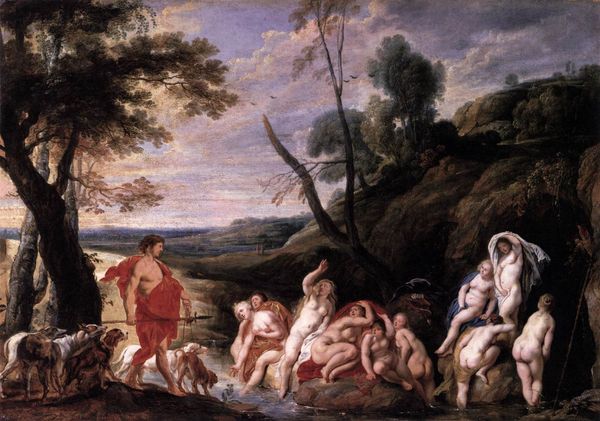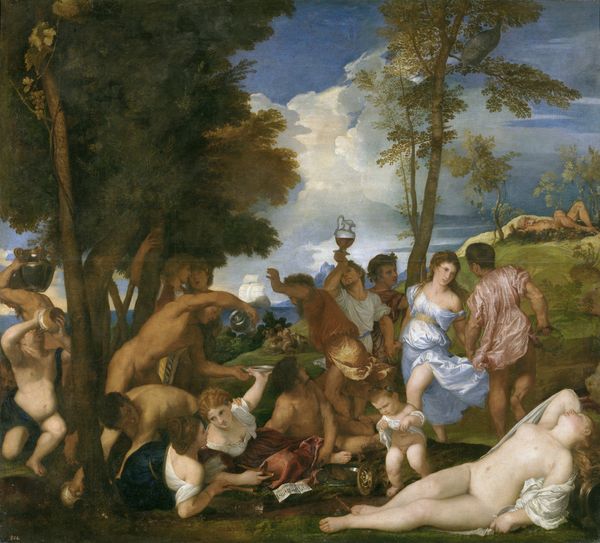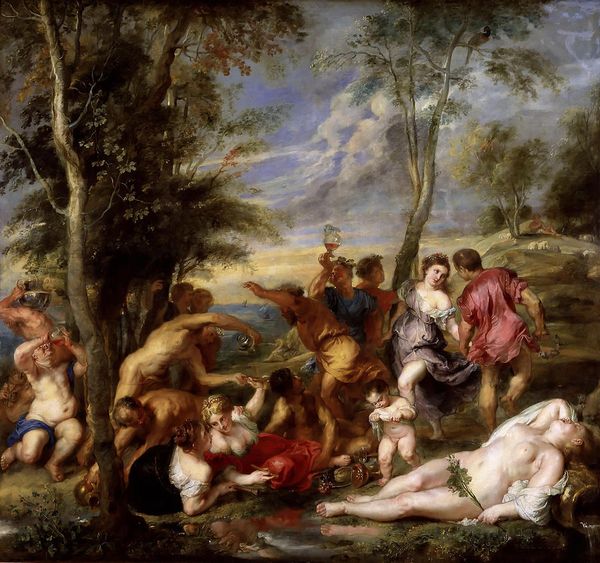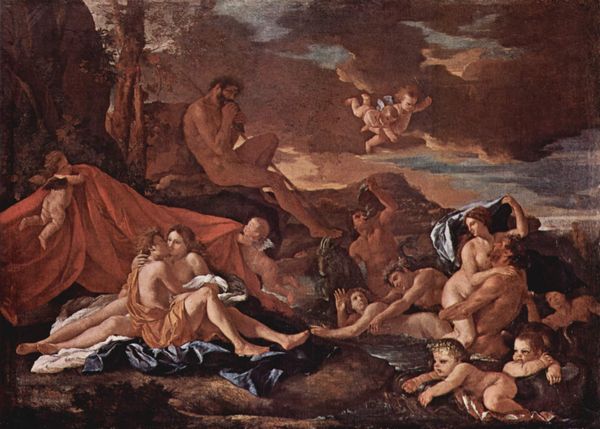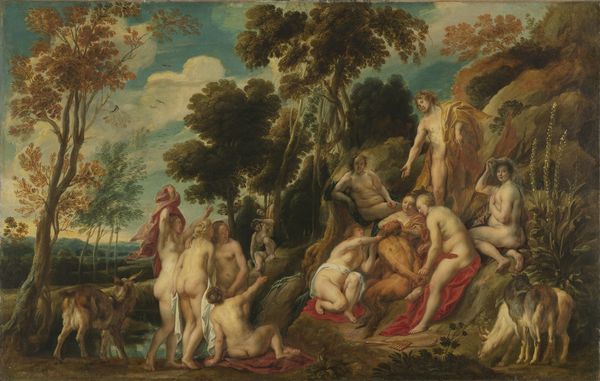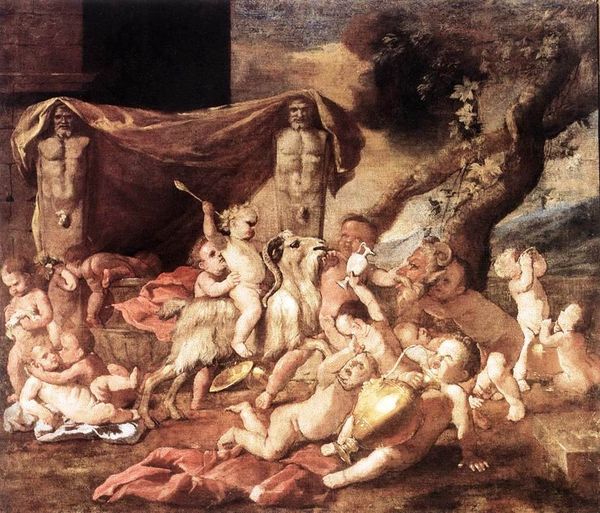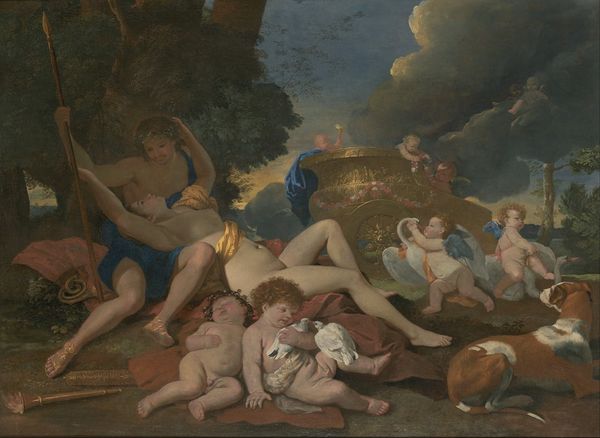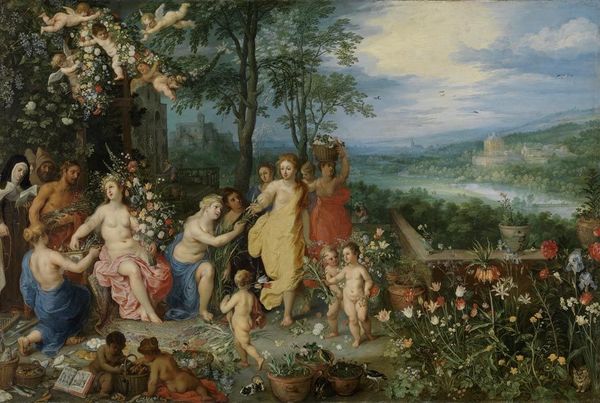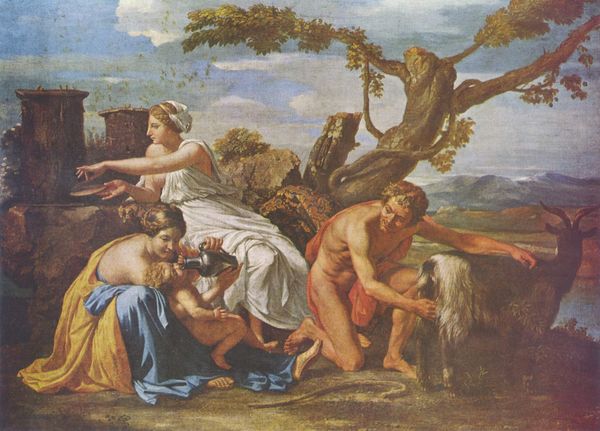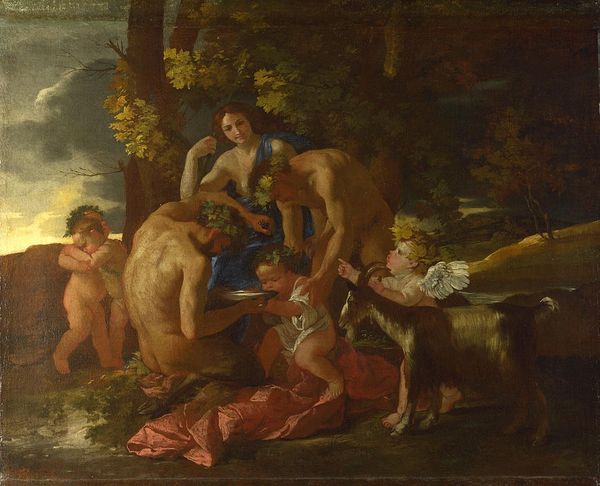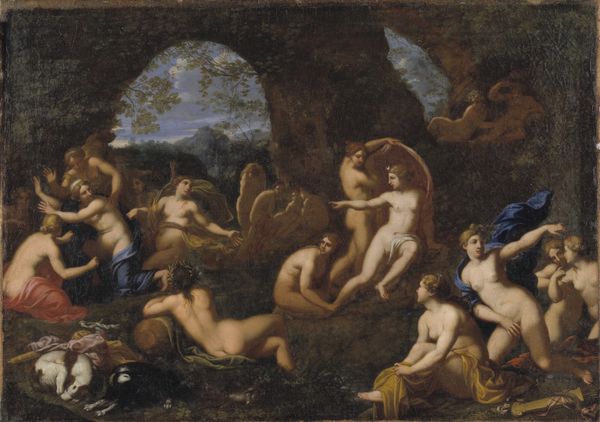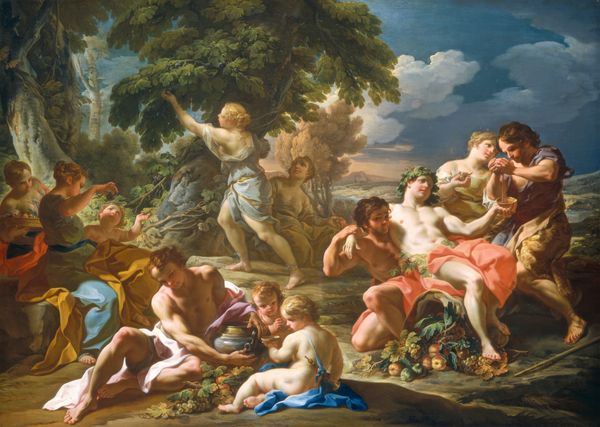
painting, oil-paint
#
allegory
#
baroque
#
fantasy art
#
painting
#
oil-paint
#
landscape
#
figuration
#
oil painting
#
painting painterly
#
history-painting
#
nude
Copyright: Public domain
Editor: This painting, "Bacchus and Ceres with Nymphs and Satyrs," painted in 1640 by Sebastien Bourdon using oil paint, has this strange, dreamy quality to it. All these figures gathered in a landscape... It’s a bit overwhelming, to be honest. What can you tell me about this piece? Curator: It's certainly packed with figures and details! Let's unpack it historically. Bourdon was working within a 17th-century French art world increasingly shaped by the royal academy. Consider how the Baroque style served specific political functions for the French monarchy at that time, often drawing on classical mythology to legitimize power and project ideals of abundance and prosperity. What effect does that have on your reading of the painting? Editor: I guess it gives more weight to the figures. It's not just some random gathering; it’s staged almost? Like these are symbols representing the kingdom's power or something. I still don’t fully understand *why* myth was such a popular reference. Curator: Because the classical world served as a model, legitimizing the present by connecting it to a glorious, often idealized, past. But beyond simply borrowing from myth, the way those stories were presented also shifted to serve particular aims. How does Bourdon's handling of the scene—the soft light, the grouping of figures—influence how we, as the public, were meant to understand those claims of power? Editor: So the soft lighting and idyllic landscape, alongside figures of myth, are kind of downplaying or covering up the realities of courtly power and control? Curator: Precisely. The art becomes less about raw power and more about… persuading the viewer of its inherent rightness, using beauty and pleasure as tools. Editor: Wow, it’s fascinating to think about how this idealized scene also carries a certain political weight. Curator: Exactly! Reflecting on that helps one understand the historical weight of an apparently pretty image. It highlights how art is often complicit in power structures and, vice versa, power relies on artworks to bolster its cultural value.
Comments
No comments
Be the first to comment and join the conversation on the ultimate creative platform.

